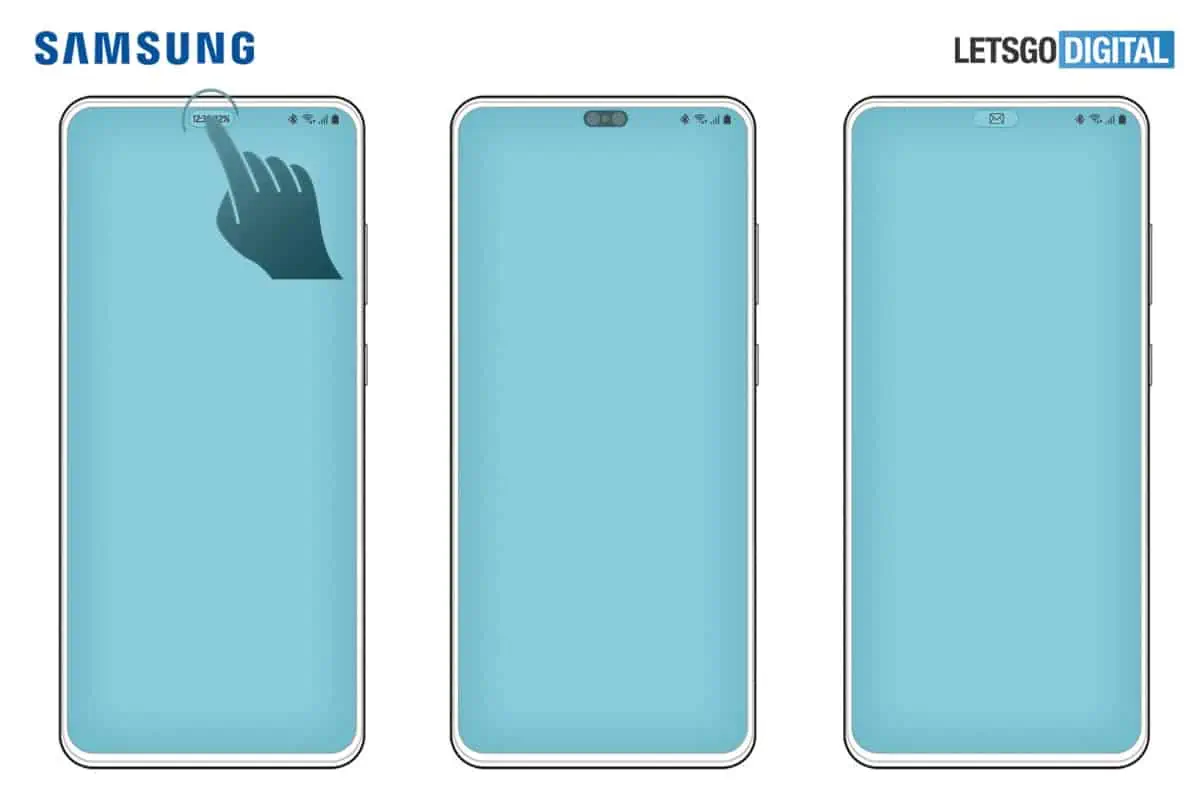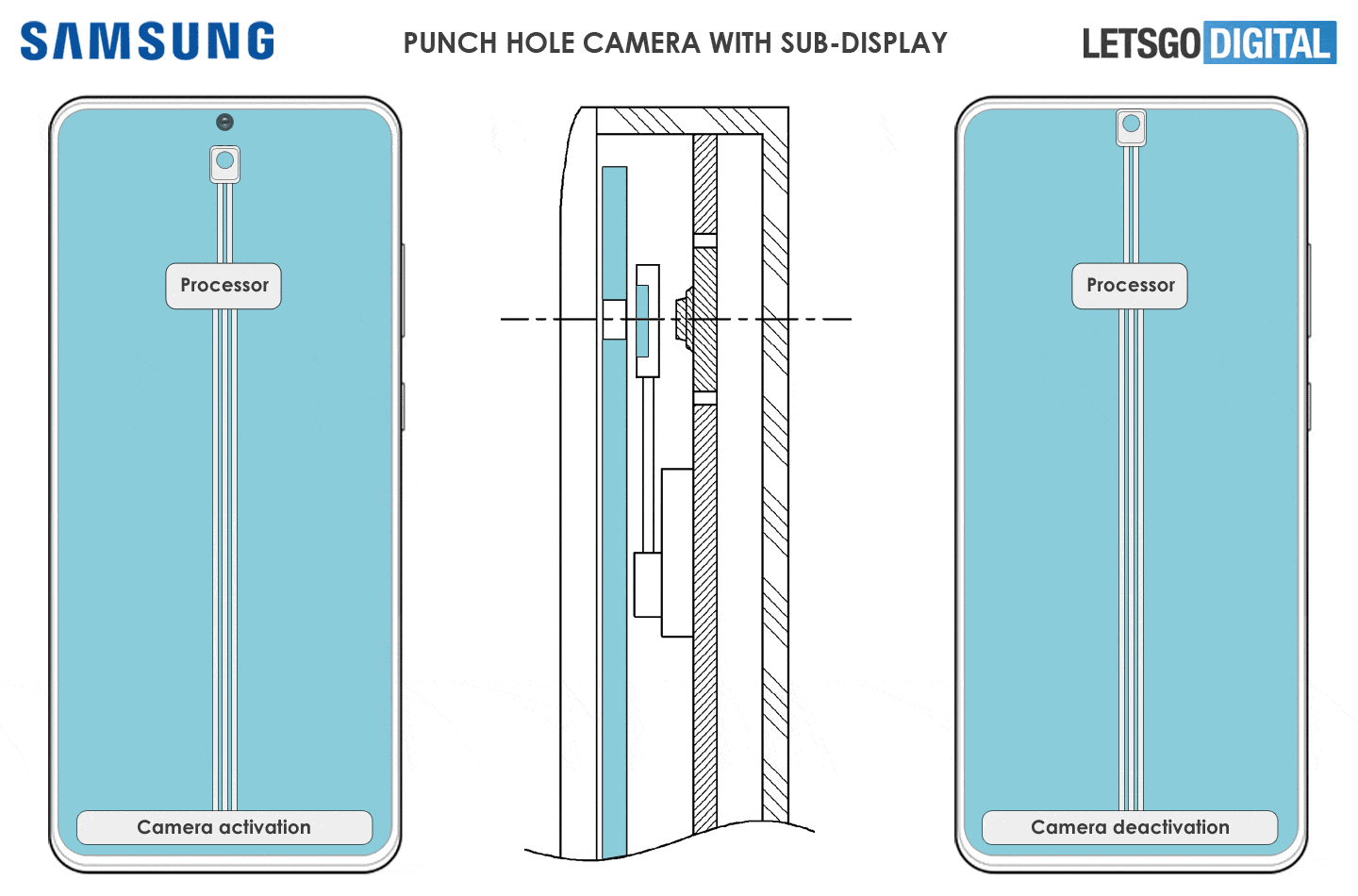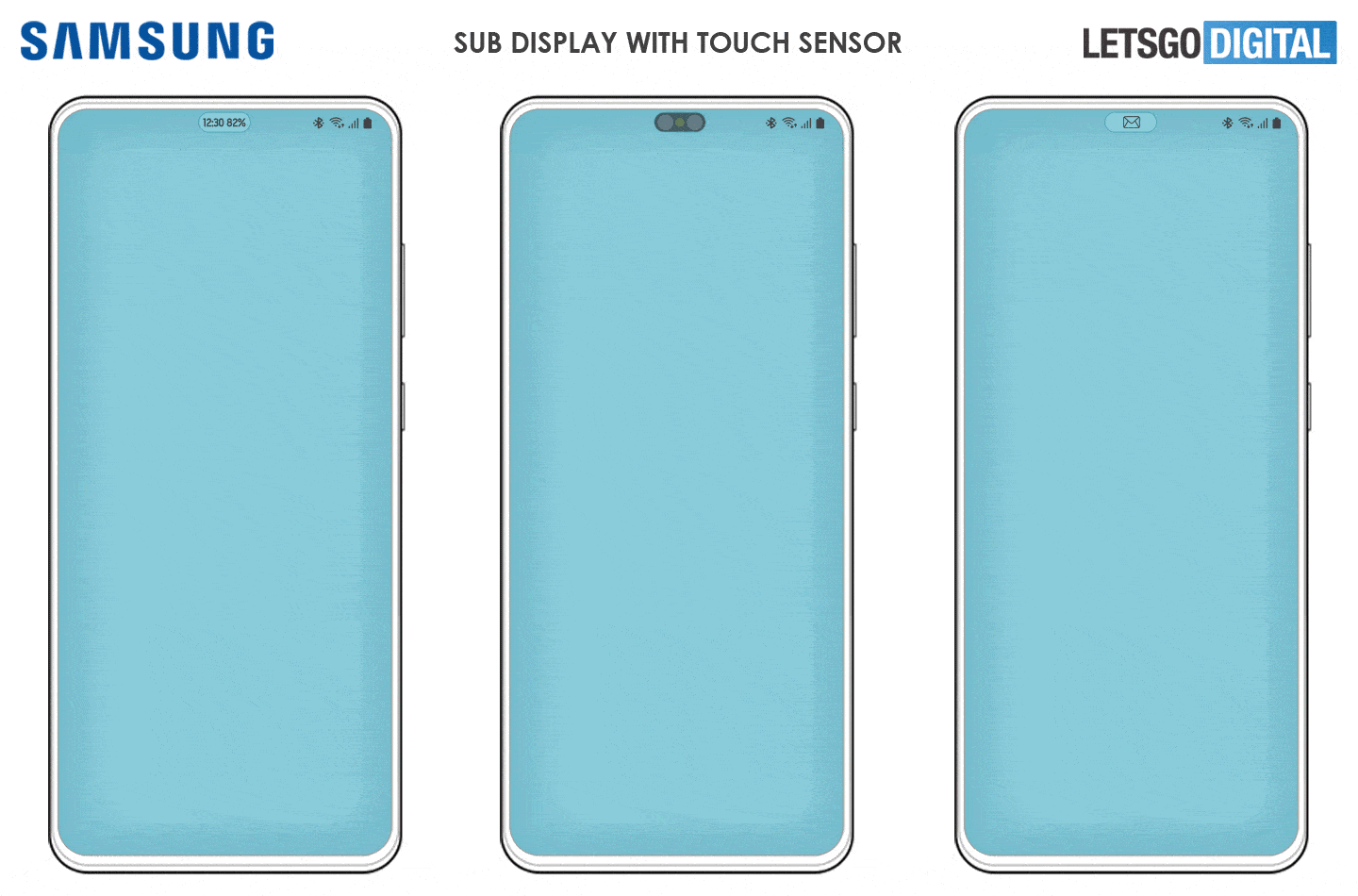Samsung has a pretty ridiculous idea for getting rid of the punch-hole selfie camera
2 min. read
Published on
Read our disclosure page to find out how can you help MSPoweruser sustain the editorial team Read more

Unlike Apple who has embraced the notch for the last 3 years, most other smartphone OEMs actually hates the visible front-facing camera and has been working for half a decade to get rid of it.
The best effort so far has been Samsung’s ever-shrinking punch-hole Infinity-O selfie camera, but many OEMs have gone to greater extremes, ranging from pop-up cameras, sliding phones and phones with secondary displays on the back and no front-facing cameras at all.
Devices with pop-up and sliding cameras have a significant compromise – the movement makes it impossible to make the device water and dustproof and exposes the camera to damage when it falls.
A new patent uncovered by LetsGoDigital, applied for on June 19, 2020, and published on the 24th December 2020, shows Samsung has a new idea which may negate those issues.
Samsung suggests a movable sub-display internal to the device, and between the camera and the external display, would mean that the camera could be covered and usable screen should be otherwise visible when the camera is not in use, and when the screen is retracted, the camera would have a clear optical pathway without the reduction in quality currently present in under-display cameras.
As noted earlier, this would keep the movement internal to the device, allow Samsung to make the device waterproof and provide more protection.
In addition, because the camera hole will be hidden, Samsung could enlarge the area, allowing for the inclusion of items such as front-facing flashes, wide-angle cameras and FaceID-style sensors. The movement can also be left to right, allowing for only some sensors to be exposed as needed, such as the FaceID sensor for unlocking your phone.
Given the proven robustness of pop-up selfie cameras, there does not appear to be any reason, except for the additional mechanical complexity (and presumably cost) for using this technology.
The full patent can be seen here.
What do our readers think of this idea? Let us know below.










User forum
0 messages